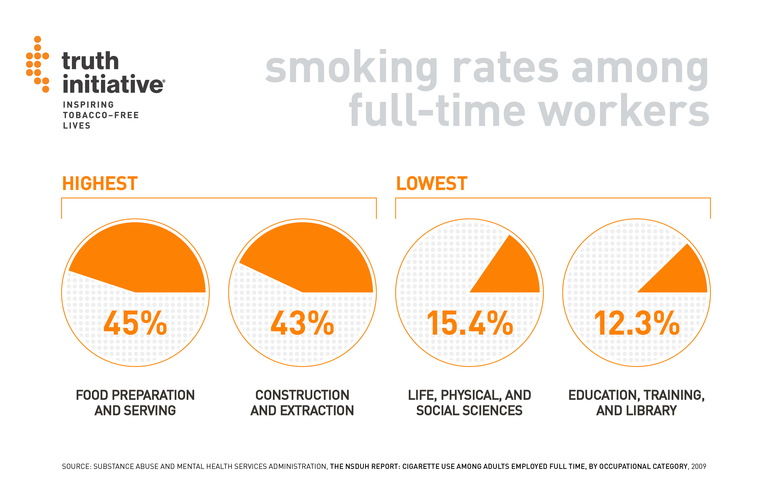The economics of tobacco: How does where people live and work impact smoking?
While overall smoking rates have declined across the country, the pace of progress can be drastically slower, or nonexistent, depending on where people live and work.
Those living in lower-income communities and working blue-collar jobs smoke at higher rates and have more tobacco-related diseases. Data from 1996 to 2012 found that the smoking prevalence rate “varies dramatically” between counties, even in the same state. Rates of decline were noticeably different between higher-income and lower-income counties.
Tobacco marketing is more prevalent in low-income neighborhoods, with more menthol cigarette marketing in communities with a larger African-American population and more smokeless tobacco marketing in neighborhoods with a greater number of white residents.
Industries with the highest prevalence of full-time employees using tobacco include food preparation and service, at 45 percent, and construction and extraction, at 43 percent. Blue-collar workers are also more likely to suffer tobacco-related health consequences, such as lung cancer.

Tobacco use is correlated with income: 21.3 percent of adults use tobacco every day or some days, and almost a third of regular tobacco users earn less than $20,000 a year and do not have a high school diploma, according to recent research from the U.S. Centers for Disease Control and Prevention. The homeless and unemployed are especially hard hit. Research shows that 42 percent of unemployed adults and nearly three-quarters of homeless adults use tobacco.
Throughout the month of August, Truth Initiative is highlighting the ways that socioeconomic disparities impact tobacco use. To learn more about the research, read the Achieving Health Equity in Tobacco Control report from a consortium of public health organizations, including Truth Initiative.
More in targeted communities
Want support quitting? Join EX Program
By clicking JOIN, you agree to the Terms, Text Message Terms and Privacy Policy.
Msg&Data rates may apply; msgs are automated.


